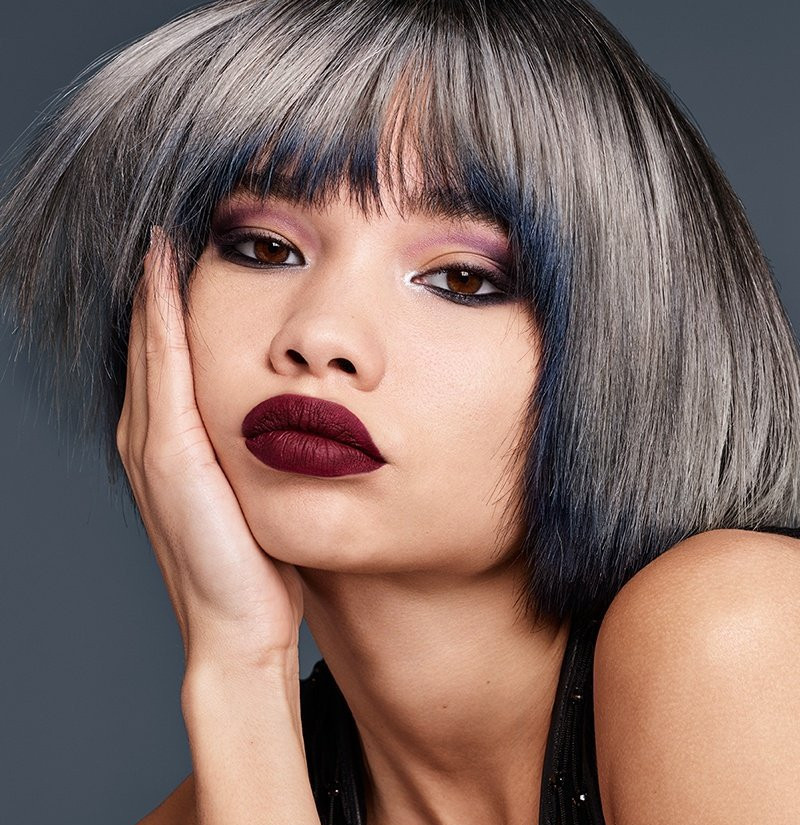Do you suffer from grays? Are you going to dye grays, but don't know how to proceed? Here you will find everything you need to know about gray hair dyeing!
As we get older, so does our hair. As soon as the first gray hair appears, you have a choice - you can either show it proudly or dye it regularly. We have prepared this article for those who decide to dye their grays. Whether you're trying to hide a few annoying white strands or need to hide a significant number of gray hair, it's important to understand gray hair and the pitfalls of coloring. Read on to find out everything you need to know about the best ways to achieve perfect gray coverage.
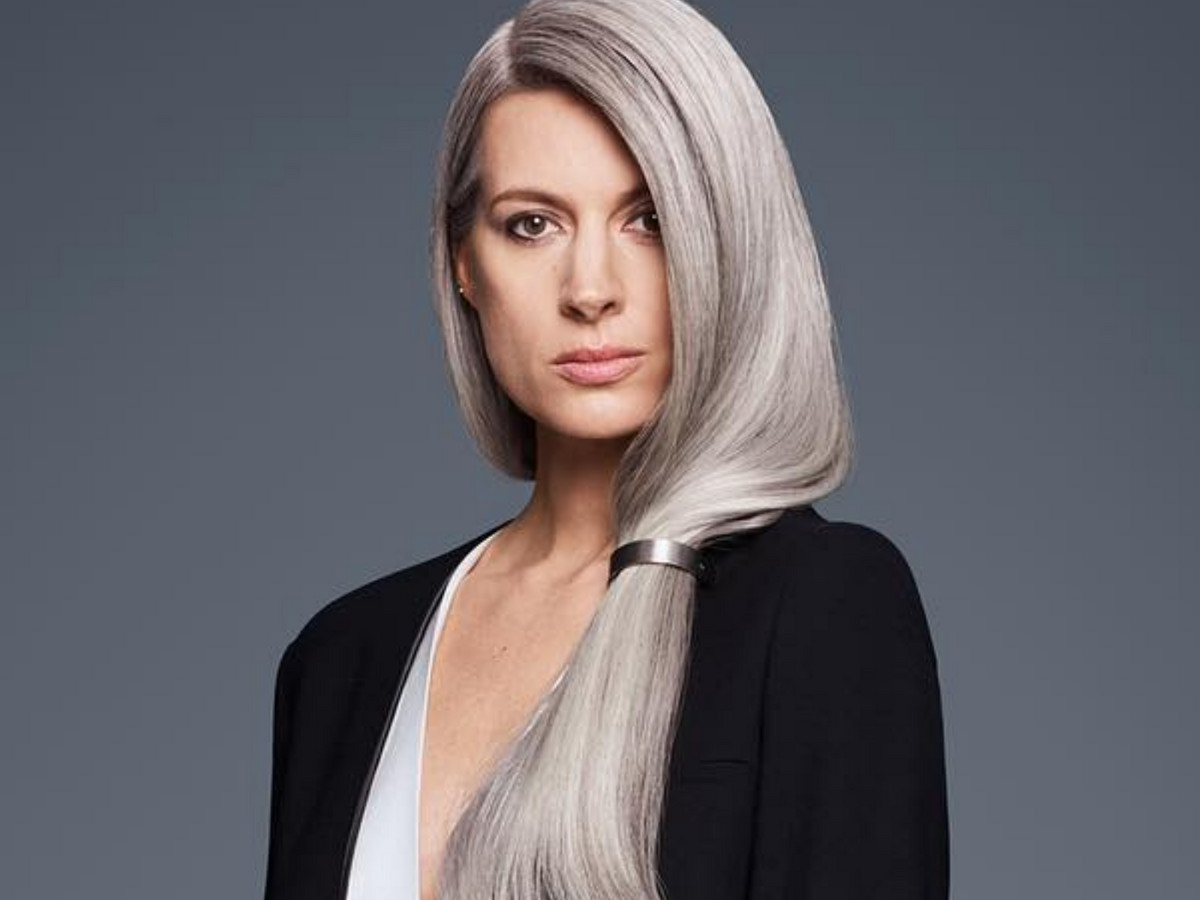
Warning! However, we would like to warn you in advance that these are only general recommendations. Each hair is different and the procedure may be different. If you are unsure, we recommend entrusting your hair to experts.
What Is Gray Hair?
The cause of gray hair is the gradual loss of color pigment, which is formed by so-called melanocytes. However, with age, melanocytes stop working, do not produce any pigments, and colorless hair begins to appear - called gray hair. In fact, gray hair does not exist! A gray appearance is the result of a combination of pigmented and white hair.
However, the change is not only about color, the hair structure also changes, which affects the dyeing process. Over time, hair follicles produce less oil, so gray hair tends to be coarser, drier and less supple, making dyeing gray hair often more complicated. But it's worth it! Today's modern and technologically advanced colors can also play with hair texture (eg Matrix SoColor Sync). They soften it, nourish it and add shine.
How to Choose a Color to Cover Grays?
Nowadays, there are already many ways to dye your hair. But women who have more gray hair often face imperfect results. The biggest problem is that some hair does not get dyed at all and grays shine through. The reason is simple, not every hair color provides 100% gray coverage. In fact, only two types of colors are suitable for hair dyeing: semi/demipermanent colors and permanent hair colors. You can find out which will be more suitable for you based on two parameters: the percentage of grays and the type of coverage (ability to cover). Or also based on your preferences.
First you should determine the percentage of grays, the so-called how many gray (white) hair you have. The percentage of grays indicates the ratio between pigmented hair and non-pigmented hair. This percentage determines not only what type and shade of color is suitable for your hair, but also how to proceed with dyeing. In general, if the percentage of grays is higher than 20%, special attention must be paid to dyeing. It should also be noted that each color has a different opacity. Finally, you should clarify what color result you want to achieve, whether natural or full coverage.
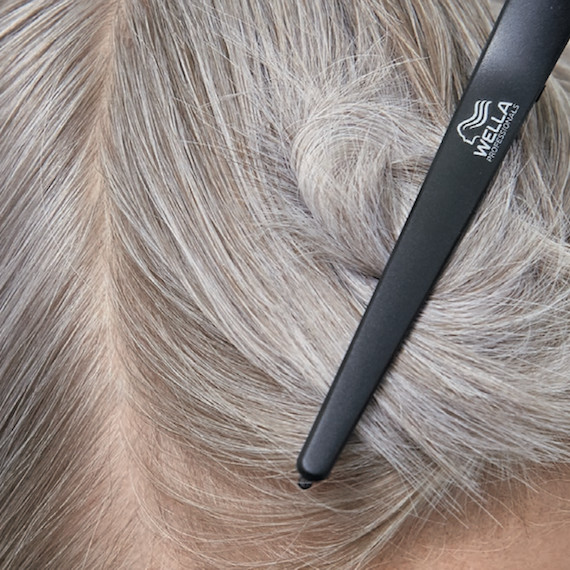
1) Pigmented Hair Care
This type of product can only be used as a quick aid to cover the first signs of grays (eg Schwarzkopf Professional Igor Expert Mousse). The effect usually lasts until the next wash, sometimes longer. You can also use hair correctors as a first aid to cover the first grays. Another interesting product is a shampoo Plantur 39 Color Brown Phyto-Caffeine Shampoo with brown pigments, which gently tones white hair and at the same time solves its thinning.
Tip! Highly effective non-oxidizing hair color Goldwell Elumen Color Cools offers two shades providing up to 100% gray coverage (NN@6, NN@8).
2) Semi- & Demi-Permanent Hair Color
Semi- and demipermanent colors usually provide 30-70% gray coverage. They are suitable for all types of gray hair, but are most often used to cover the first grays, if you do not want full coverage. The semi-permanent hair color allows your natural hair color to remain as it is, while tinting a few gray hair that merge with the color and look like a light highlight in your hair (eg Wella Professionals Color Fresh). The result is a natural, multidimensional and radiant hair color. Another advantage is that the color is gradually washed out of the hair, so you do not have to worry about regrowth. However, these colors can only be used to darken because they are not strong enough to lighten your hair.
3) Permanent Hair Color
Permanent hair colors are ideal if you want complete 100% gray coverage. They are recommended in cases where you have 50% gray hair and more. Permanent hair color contains more ammonia and opens the hair cuticle, allowing the color to penetrate deep into the hair. This allows you to cover greys better and more lasting - it does not wash out like a demi-permanent hair color. However, this requires more frequent maintenance due to the regrowth. Most permanent colors offer 100% gray coverage, but there are exceptions, so always follow the manufacturer's instructions. Each color can also have slightly different properties.
4) Special Colors For Gray And White Hair
The best choice is special hair colors that are created especially for mature hair. They usually have heightened ability to cover gray or white hair than classic hair colors, and are also designed with the structure of gray hair in mind. They often contain special complexes of nourishing oils, ceramides, etc. So they will take care not only of your color, but also the quality of your hair. With these colors, you will be 100% sure that your grays will be over forever. Another advantage is also that there is no need to mix them with basic (natural) shades. The disadvantage used to be a limited selection of shades, usually only natural tones, but today it is different and more and more often these colors also offer fashionable shades.
- Schwarzkopf Professional Igora Royal Absolutes Silver Whites - toning demi-permanent hair color with a caring complex for beautification and gentle toning of white and silver hair, lasts up to 25 washes.
- Londa Professional Extra Coverage Demi Permanent Color - demi-permanent paint, which has 20% more pigments for extra opacity, covers up to 70% of grays.
- Redken Chromatics Beyond Cover ODS - a multidimensional color that provides 100% gray coverage for hair that is 75% or more grays, and yet does not create the appearance of a helmet. In addition, it works intensively against the roughness of hair - for a silky feeling and a brilliant, healthy and youthful appearance.
- Matrix SoColor Extra Coverage - provides complete and even gray coverage and leaves hair looking natural. It also contains ceramides, jojoba oil and soybeans, which condition and smooth the unruly textures of gray hair.
- Schwarzkopf Professional Igora Royal Absolutes - permanent hair color for excellent coverage of gray hair and liveliness of mature hair, even strong and very resistant. Suitable for dark and light bases.
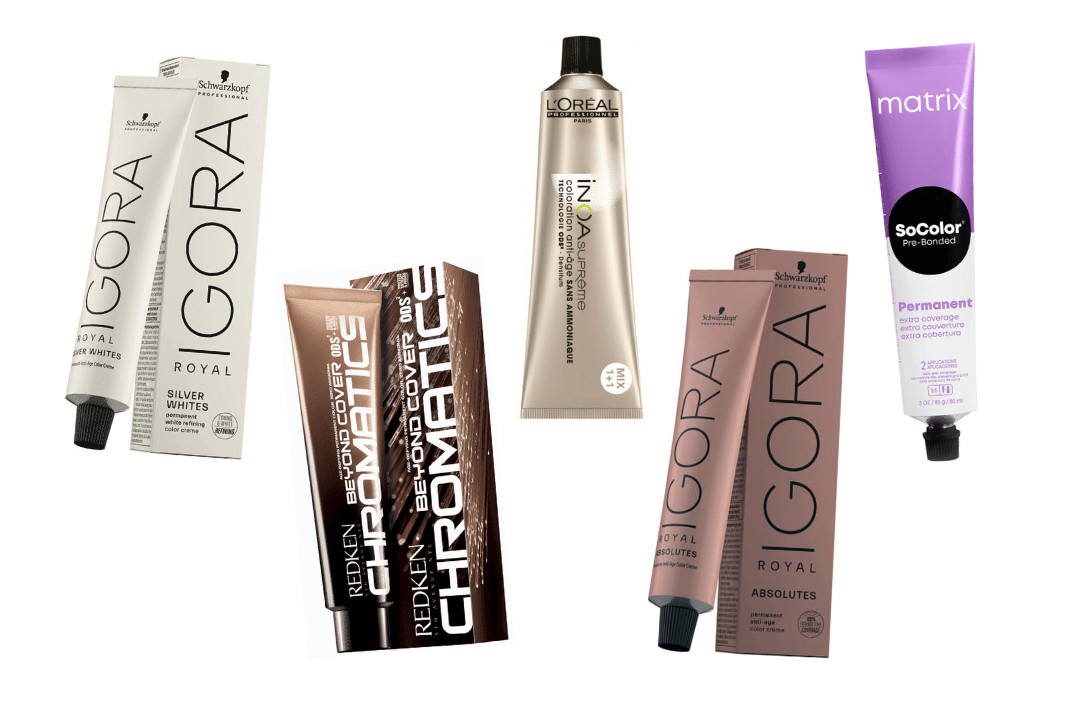
5) Special Colors For Men
There are also special colors on the market for men who want to cover their white hair in a natural way. Of course, men can use exactly the same hair colors as women, but these special types of colors are much more suitable for them. They do not dye the hair so richly, they just tint it and allow it to gradually return to the natural hair color. The more often the application is repeated, the more intense the effect is. This guarantees the inconspicuousness and discretion of the color effect without the need for a radical change. For example: Wella Professionals SP Men Gradual Tone.
The range also includes oxidative paints for men, usually with a formula that gradually washes out to ensure maximum natural effect and easy maintenance: Goldwell Men Reshade and American Crew Precision Blend.
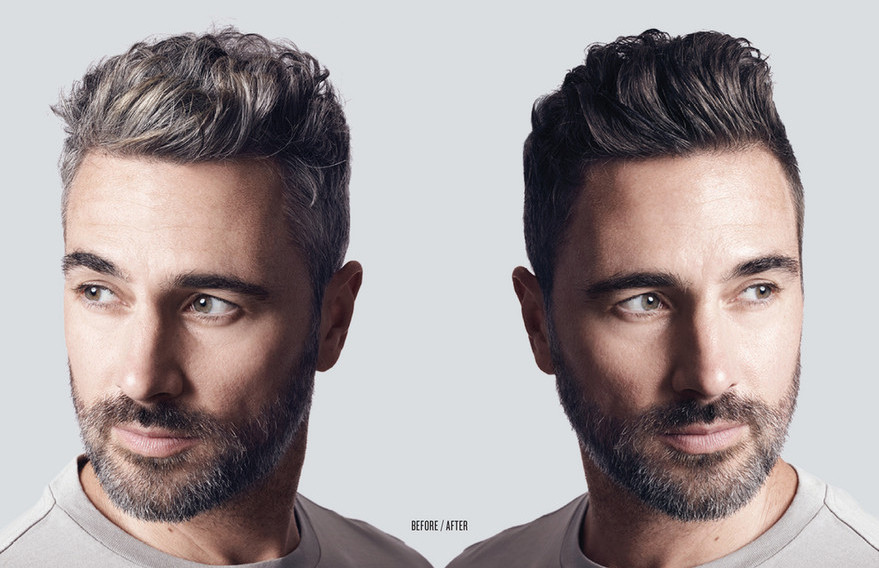
What Shade Is Suitable For Dyeing Gray Hair?
As with choosing a hair color, you should be careful when choosing a shade. Not all shades can 100% cover grays and could result in grays shine through. The most suitable shades for dyeing gray hair are considered to be natural shades, which are able to 100% cover white hair. These are usually marked N or 0 (5N, 5NN, Natural, 5, 5.0 or 5.00). All other shades, especially fashionable shades, are less suitable. Trends fashion shades tend to cover less and are too strong and unnatural compared to natural shades. The solution is to mix the fashion shade with the natural shade in the same depth (level of color). This step modifies the color so that the resulting color is more even and natural. You can learn more about this issue in the chapter on mixing shades.
In general, it is also more suitable to use a tone lighter color when dyeing gray hair than the original color, as dark shades tend to look rough and unnatural. In addition, when growing up, the regrowth will be more visible. It is also good to realize that gray and bleached hair absorbs cold pigments more easily and rejects warm pigments. Therefore, sometimes ashy shades can appear too cold on white hair.
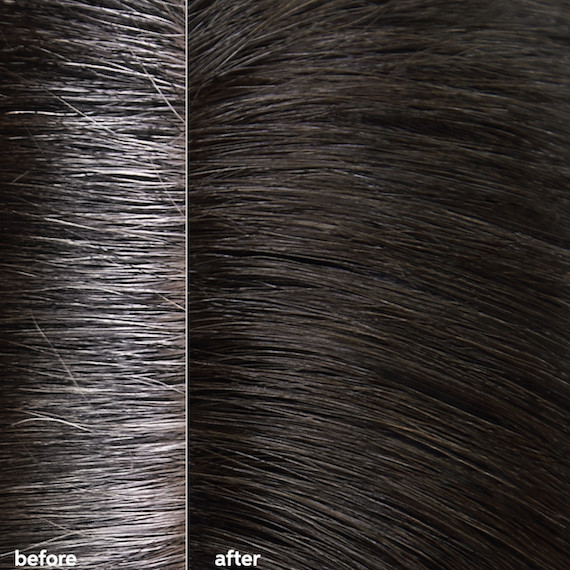
How Strong a Developer To Choose?
The 6% developer is most commonly used, but if you work with gray hair that is strong, coarse and resistant, you sometimes need to use a 9% oxidant. 9% oxidizing emulsion penetrates better into the hair structure, which means that it better covers resistant grays.
Gray Hair Dyeing
Gray hair is specific in that there are both pigmented and completely colorless (white) hair on the head at the same time. Each hair then reacts differently to the color. Try to imagine what a black and white wall would look like if you painted it blue? In most cases, you would get a light and dark blue pattern. That's why it's so difficult to paint grays and achieve an even result. For this reason, dyeing gray hair requires a slightly different approach. Unless it is a special gray-coverage color, you will need to mix more than one shade to get the right color result. You will usually find out in the instructions when it is necessary to mix the selected shade with another shade. You will probably start from the percentage of gray hair. In some cases, it is even necessary to match the color of the foundation before dyeing.
Mixing Shades
If you long for a chestnut, gold or other fashionable shade and you have more than 30% gray hair, in most cases you will have to mix the shades. As we indicated in the previous points, for sufficient coverage will be necessary to mix the selected fashion shade with the natural shade in the same depth (level of color). These are shades N, NN, Natural or, in numerical designation, a number ending in zero (5, 5.0, 5.00 or 6.0, 7, 8.00, etc.). We also recommend following the principle that we mix warm shades with warm tones and cold with cold tones. Remember that each brand may use a different mixing ratio, the higher the proportion of gray in the hair, the more natural shade will need to be added.
-
Up to 25% of white hair: use the shade we want or mix the fashion shade with the natural shade in a ratio of 2:1 (2 parts of the fashion + 1 part of the natural shade).
-
25%-50% of white hair: we mix a fashion shade with a natural one in a ratio of 1:1 (1 part fashion + 1 part natural shade).
-
50%-100% white hair: we mix a fashion shade with a natural one in a ratio of 1:2 (1 part fashion + 2 parts natural shade).
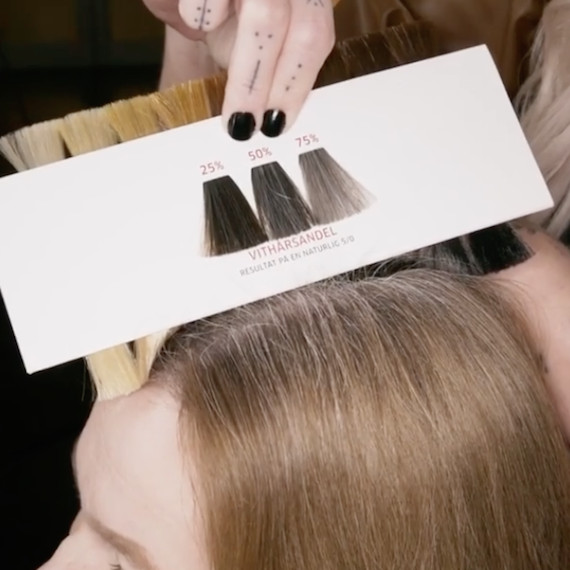
Warning! Please note that the information above is only a general guide and each brand may use a different mixing ratio, eg permanent color Majirel up to 50% of white hair can be used separately (not need to mix with a natural shade). Therefore, always follow the manufacturer's instructions.
Color Application
The procedure for applying the color does not differ, it is the same as for pigmented hair (we wrote here). It is only recommended to start the application where there is the most white hair or where the hair is resistant. In most cases, you should also let the color work for the maximum specified exposure time so that the color adhere well. However, sometimes there may be situations where the color does not adhere well. This most often happens with very coarse and resistant hair. However, in the hairdresser's, they can handle it. Pre-pigmentation (a service that opens the hair to make it easier to penetrate the hair) may be needed.
1) Dyeing of natural gray hair
- STEP 1: Apply the mixture along its entire length approximately 2 cm from the scalp.
- STEP 2: Then apply the remaining mixture to the roots and leave to act for the specified time.

2) Dyeing of Gray Regrowth
- STEP 1: Apply the mixture to the roots (regrowths) (not longer than 2 cm).
- STEP 2: Leave on for the specified time.
- Tip! Lengths do not need to be dyed. However, at the end of the exposure time, you can spread the mixture to lengths, leave on for a while (approximately 5 minutes) and rinse. This naturally masks the passage between the old and the new color.
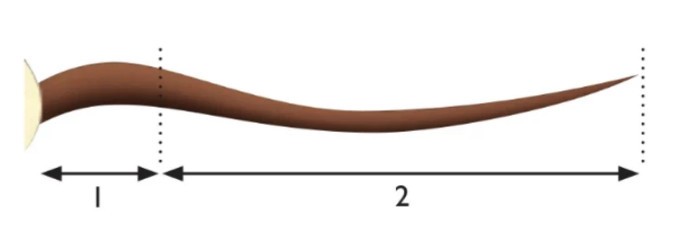
3) Dyeing of Long Regrowth (roots)
- STEP 1: Apply the mixture to a regrowth of about 2 cm from the scalp.
- STEP 2: Then immediately apply the same mixture to the roots.
- STEP 3: Finally, apply the remaining mixture to the lengths and ends.
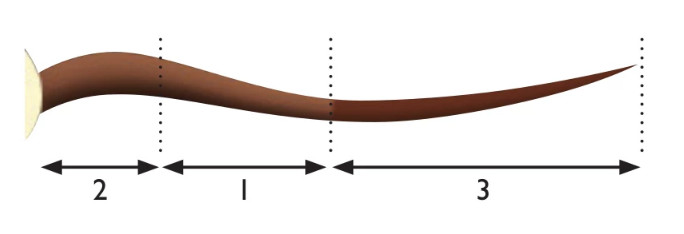
Important! Before you start dyeing, we recommend that you read our other articles on dyeing:
- Types of Professional Hair Colors - Choose Right!
- Hair Color Numbering - Choose the Right Shade!
- How to Choose Right Volume Developer for Hair Color?
- How to Dye Your Hair at Home?
- 10 Common Mistakes You're Making When Dyeing Hair
